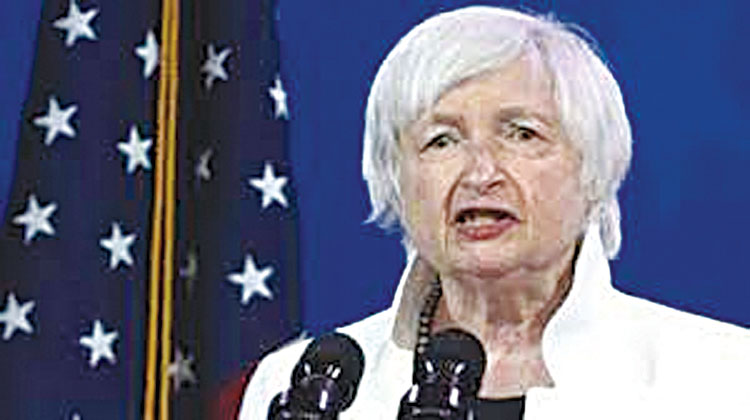Washington, April 29 (Representative) The United States should prepare for a recession after avoiding a depression from the coronavirus breakout, Treasury Secretary Janet Yellen said Thursday as she urged policy-makers to insulate the economy from the next downturn after it turned negative in the first-quarter of the year. “It is imperative to build and maintain an effective and efficient set of recession remedies,” Yellen said in a speech after the United States posted a 1.4% decline in gross domestic product (GDP) growth between January and March. “Over the long run, such measures will reduce volatility while [they] also lessen the depth of future recessions.” The negative GDP growth, the first since a 31.2% decline between March and June 2020 after the COVID-19 outbreak that year, came after a resurgence in coronavirus cases and fewer pandemic relief payments by the government during the first quarter of this year, the Department of Commerce said.
Economists warned that if the GDP contracts in the second quarter as well, the United States would automatically be in recession. Yellen said the scars from the Great Recession of 2008/09 were still fresh on American minds when the economic collapse from COVID-19 occurred, triggering policy responses that went well and beyond basic remedy. “The recovery packages sought to protect against tail risk, ” she said. “They were not just tailored to address the median outcome. Let me be clear: the tail risk in 2020 and 2021 was a downturn that could match the Great Depression.” The Great Depression refers to the severe worldwide economic depression between 1929 to 1939 that began after a major fall in stock prices in the United States. While the US economy contracted by 3.5% in 2020 from disruptions forced by the COVID-19, it also expanded by 5.7% in 2021 – growing at its fastest pace since 1984. Yellen noted that of all tools policy-makers had now for fighting a recession, the labor market was probably the most resilient, with employment of Americans having hit record highs after rebounding all-time lows just two years ago.
“It is necessary to preserve attachment to the labor force in an economic downturn,” the treasury secretary said. “While we need more work to best target our policy response, in recent years we’ve worked with multiple new policy levers to keep workers on payroll and off on long-term unemployment.” Joblessness among Americans reached a record high of 14.8% in April 2020, with the loss of some 20 million jobs in the aftermath of the coronavirus breakout. Employment has, however, been stellar over the past year, with the jobless rate moving down to 3.6% in March. A jobless rate of 4.0% or below is regarded by the Federal Reserve as “maximum employment”. Aside from ramping job numbers, the United States is experiencing one of the greatest transformations of its employment market as COVID-19 measures upended labor supply and work trends, putting employees’ demands above those of employers.

